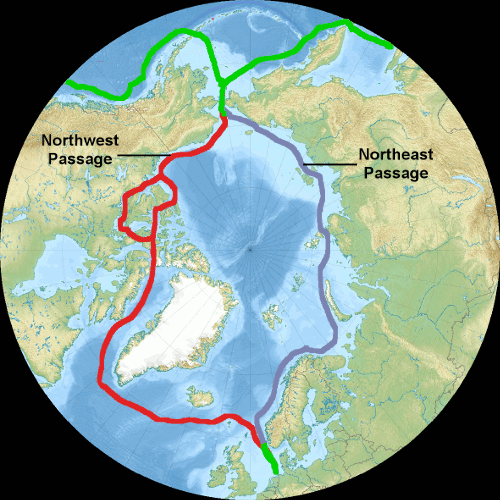
Circle the area on this map

D. The usual shipping route from China to Europe runs through the South China Sea, the Indian Ocean, the Red Sea, and then through the Suez Canal in Egypt to the Mediterranean Sea. Denmark’s Maersk shipping company said the Arctic journey by its ship was “a one-off trial designed to explore an unknown route for container shipping and to collect scientific data.”
C. It has long been a Russian dream that the passage along the nation’s northern shore could become a regular trade route, and there also is great commercial interest in Europe as well as northeast Asia. Scientists project that within the next 20 years the Arctic Ocean will be largely open water during the summer months because of climate change.
A. The Canadian government claims that some of the waters of the Northwest Passage, particularly those in the Canadian Arctic Archipelago, are internal waters of Canada, giving Canada the right to bar transit through these waters. Other maritime nations classify the waters as an international strait.
B. This phenomenon occurred twice this year due to warm winds and a heatwave in the northern hemisphere, with a record temperature of 90 degrees reported north of the Arctic Circle. One meteorologist described the unprecedented loss of ice north of Greenland as “scary”.